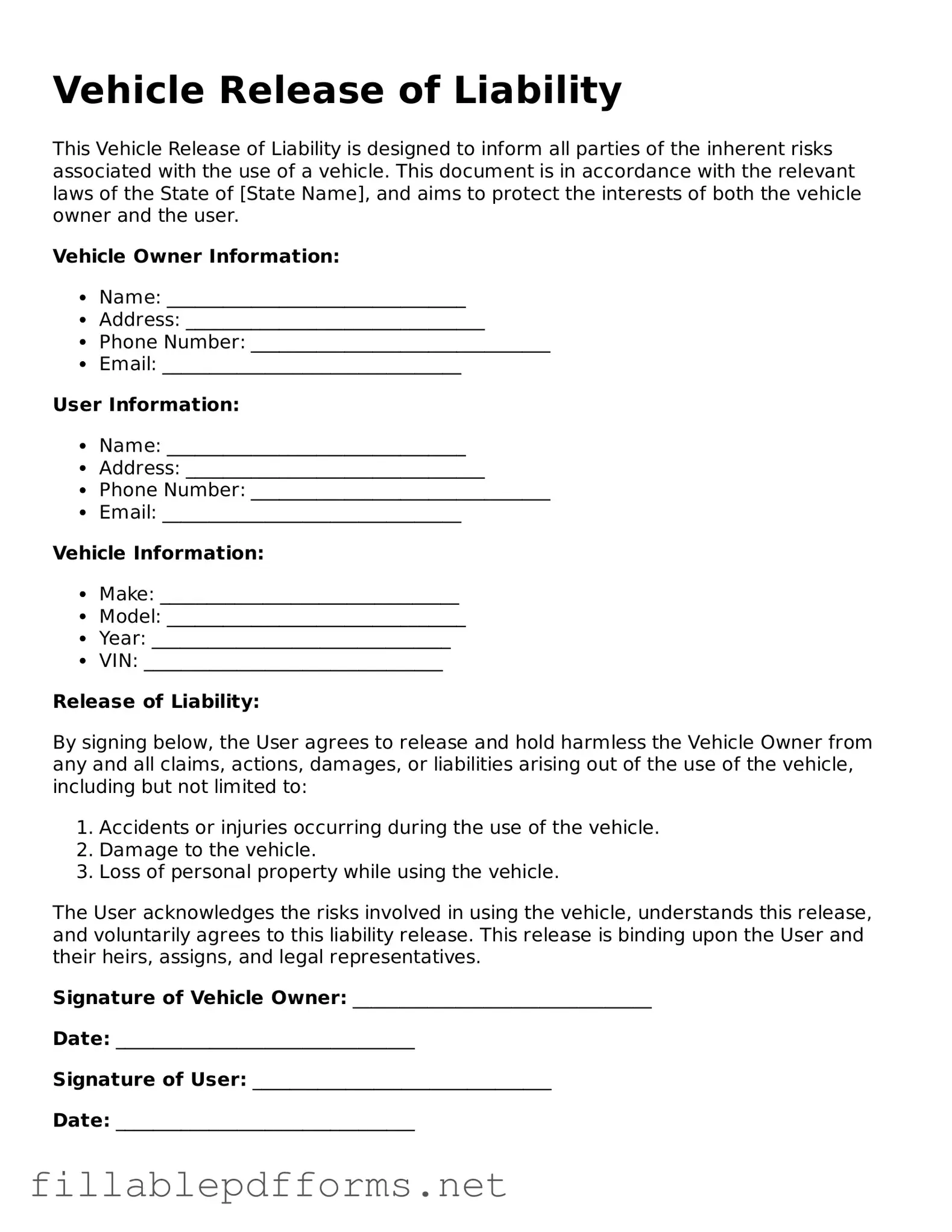Blank Vehicle Release of Liability Template
The Vehicle Release of Liability form is a legal document that protects vehicle owners from claims or damages arising from the use of their vehicle by another party. By signing this form, the vehicle owner acknowledges that they are releasing any liability associated with the vehicle once it is transferred or used by someone else. This form is essential for ensuring clarity and understanding between parties involved in vehicle transactions.
Launch Editor Here
